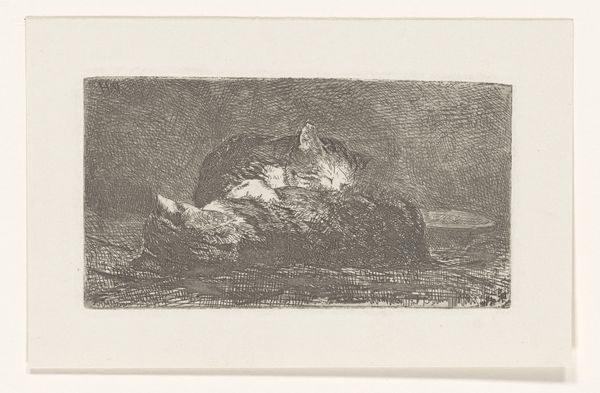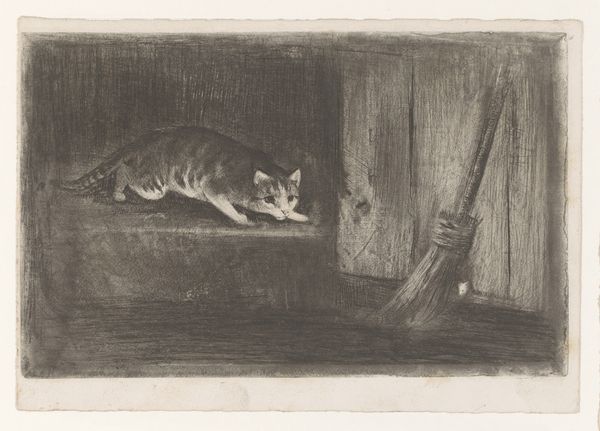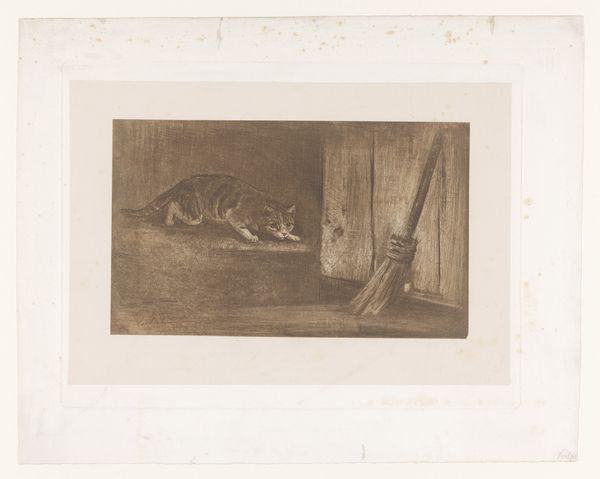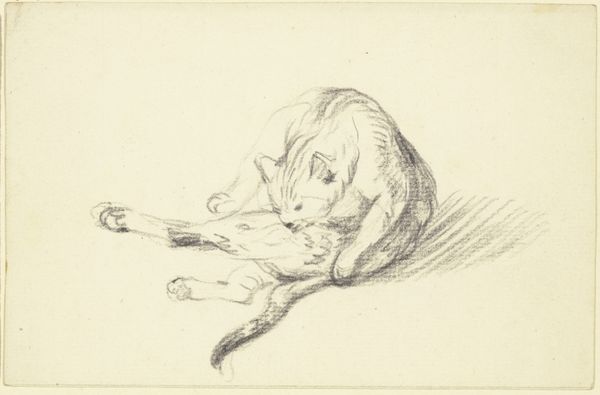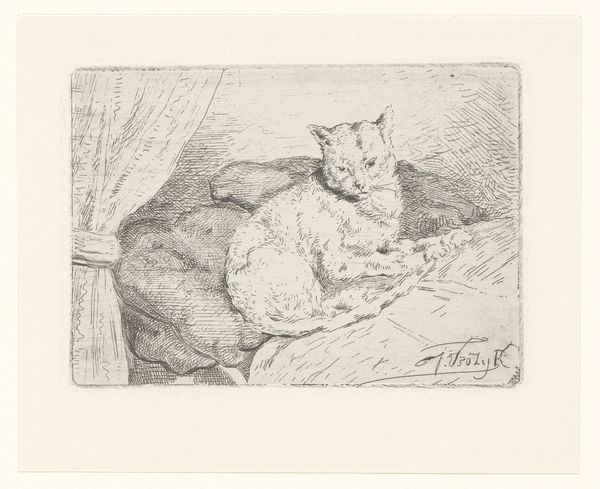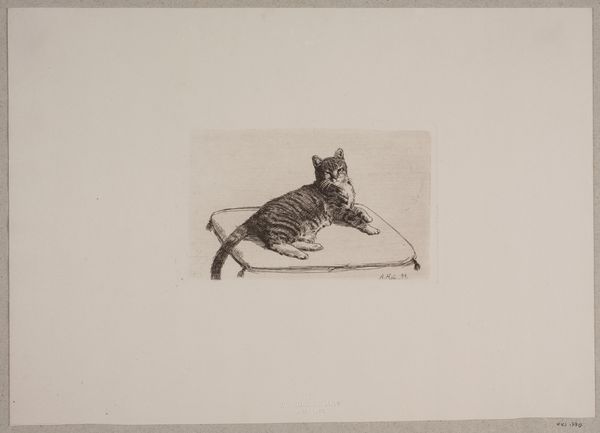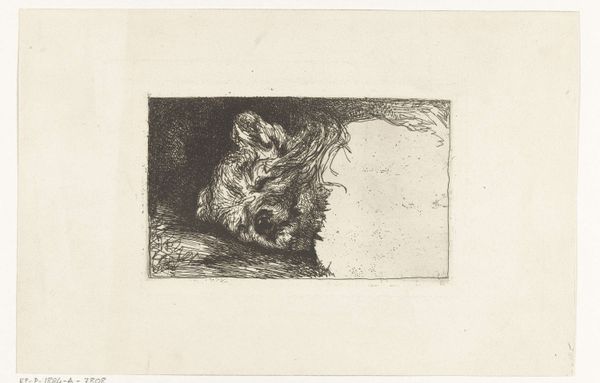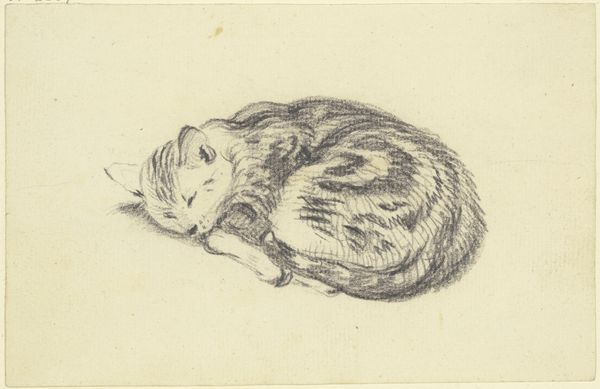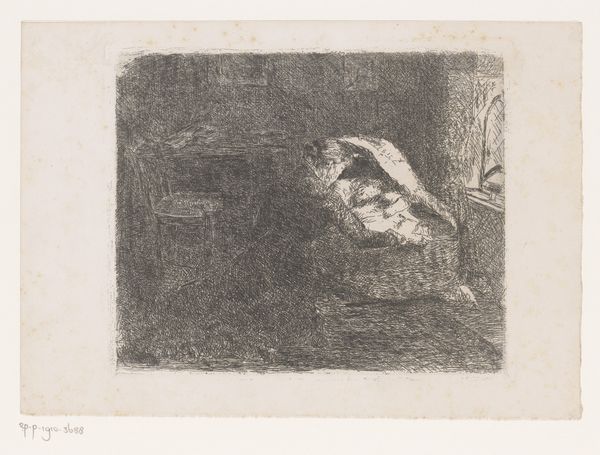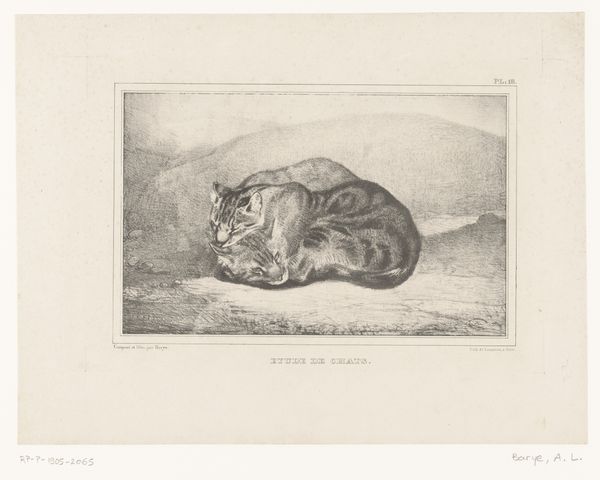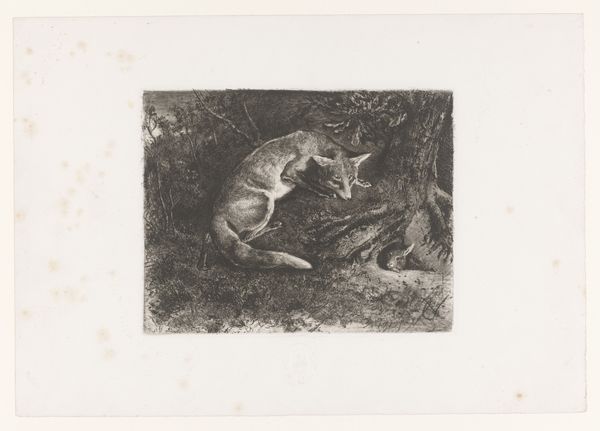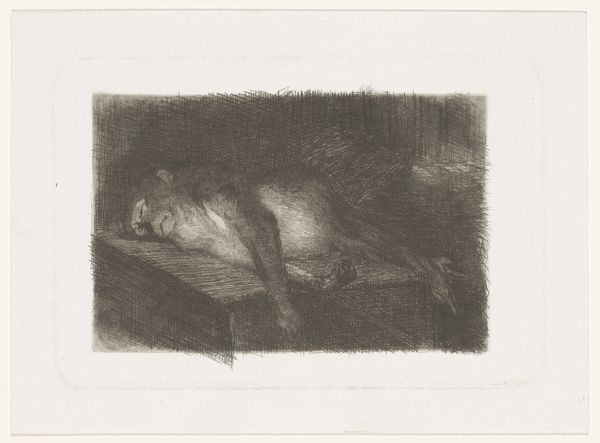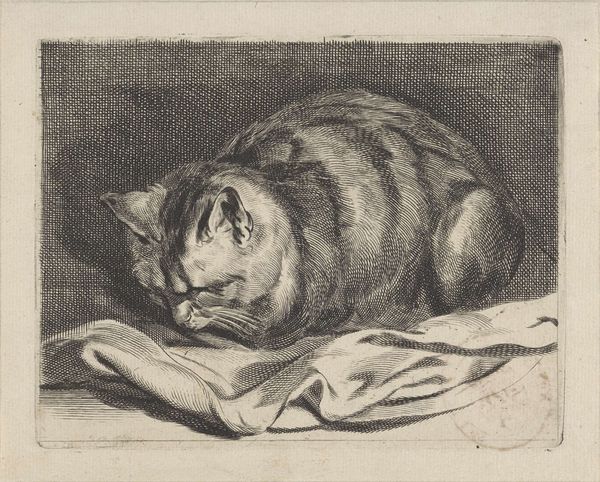
print, etching
# print
#
etching
#
old engraving style
#
realism
#
monochrome
Dimensions: height 52 mm, width 99 mm
Copyright: Rijks Museum: Open Domain
Curator: Oh, aren't they sweet? These two sleepy cats create such a sense of intimacy. Editor: Intimacy achieved, it would seem, through a strategic orchestration of lines and values, all culminating in a masterclass of etching technique. Curator: You've really zeroed in on the etching itself! We're looking at "Two Cats," dating from sometime between 1862 and 1930 by Herman Johannes van der Weele. What grabs me is the quiet drama of everyday life. These cats curled together seem utterly unbothered. It's realism at its most affectionate, wouldn't you agree? Editor: Affectionate, yes, but the work is more complex than simple mimicry. Notice how the limited palette of blacks and whites creates depth and volume. Weele masterfully uses light and shadow to define the forms of the cats and the textures of their fur. The interplay of positive and negative space further emphasizes their curled, almost intertwined position. It's more than observation; it's visual problem-solving. Curator: I get it. The composition leads us there—a little bowl set beside them, grounding them in some domestic space. The textures are soft, drawing you closer. You want to reach out and touch them. Though perhaps not advisable! Do you think it shows any clear influence of realism through natural light and subject matter? Editor: The realism is undeniable in its commitment to observable forms, yet Weele's abstraction with his linear method injects artifice, too. The tight hatching certainly directs light from the top left, but this is more about conveying the sensation of three-dimensional presence, more than striving for purely photorealistic accuracy. The lack of sentimentality is really intriguing. Curator: Absolutely. A snapshot of peace and contentment. The artist found such poetry in simplicity. I find I am also thinking more about what it is to be at ease... Editor: Agreed. Beyond mere depiction, Weele coaxes from us a study on material presence that’s achieved entirely on surfaces. Curator: That sounds perfectly conclusive, if I may say. Thanks for drawing it out of the ether for us.
Comments
No comments
Be the first to comment and join the conversation on the ultimate creative platform.
